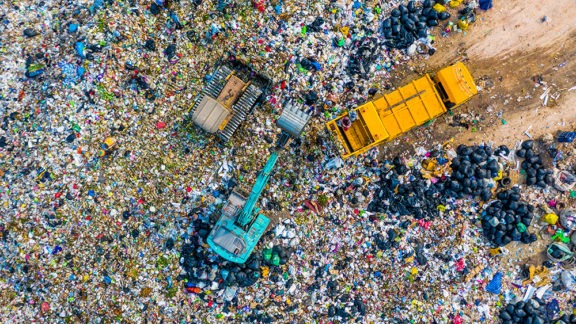Earlier this year, the California State Water Resources Control Board (SWRCB) issued investigative orders related to potential PFAS (per- and polyfluoroalkyl substances) contamination that required airports to develop a testing plan within 60 days. PFAS are in aqueous film-forming foams (AFFF) ” the firefighting foams the Federal Aviation Administration (FAA) required at certain airports. In recent years, regulators and citizens’ groups have shown growing concern about PFAS after reports that link them to a list of adverse health effects.
The SWRCB implemented a phased approach to get a preliminary understanding of PFAS concentrations in soil and groundwater at airports to make regulatory decisions and set safety standards. Phase I of California’s orders started in March 2019 and initially targeted 31 airports. California, a state that never shies away from being the first to regulate, is just the first of many to implement orders. Even if your airport operates in states not yet hit with PFAS orders, there are a few things you can do now to prepare. While most California airports were forced to ask for an extension for Phase I, at least one avoided the stress, cost, and procurement challenges by taking proactive steps before regulations forced them.
How one airport got ahead of PFAS regulations
It was all about being proactive. Our client ” an airport we have a long-term relationship with ” was already dedicated to social responsibility and environmental stewardship and was aware that PFAS regulations were coming. They understood early on that evaluating the risk of potential PFAS contamination was the best thing to do and were actively researching mitigation methods and AFFF alternatives.

Where did our client start? The Airport Cooperative Research Program (ACRP) has some sound guidance in its Research Report 173. However, everything really began by asking a few simple questions that any airport can consider:
- Where and how is AFFF being stored and tested currently and in the past?
- Where and how much AFFF has been used in responding to incidents?
- Where and how is used AFFF being disposed currently and in the past?
With those questions answered, we helped our client align the results with their best management practices, which included clear communication amongst stakeholders and keeping senior management well informed. Everyone at the airport was aligned on the organization’s risk tolerance and had clear goals and milestones. When the SWCRB’s order came through, our client already had a clear understanding of AFFF storage, use, and disposal.
Additionally, stakeholders agreed that the airport needed to mitigate the risk of testing the foam, which the FAA required once a year. When most other airports were asking for an extension, our client was ready. However, there are many airports and other facilities that have yet to address PFAS ” or even ask whether or not they should address PFAS. As the number of states requesting PFAS testing and issuing regulations keeps increasing, these organizations will be left scrambling when faced with state, or even federal, regulatory deadlines.
How your airport can be proactive about PFAS
There are operational adjustments airports can make now to get proactive about mitigating PFAS contamination risks.
First, consider AFFF testing equipment alternatives that do not require dispensed foam into the environment. Dispensing AFFF onto the ground isn’t the only option. There are now AFFF testing alternatives that could help airports avoid potential PFAS releases. Alternatives include the Eco-Logic System from E-One, the NoFoam System, and the Oshkosh Eco Electronic Foam Proportioning System. Additionally, look into whether your state’s regulatory agency is taking back fluorinated foams “ like they are doing in Massachusetts and Vermont.
If your airport is under development and performing new construction, workers have the potential to come into contact with PFAS contaminated soil or groundwater and should be protected. Construction and demolition wastes, excavated soils, and groundwater from dewatering may be contaminated with PFAS, requiring appropriate handling for reuse or disposal. These considerations and costs should be factored into your capital improvement planning and project budgets.
Surprising sources of PFAS in consumer products:
- Paper & packaging (including pizza boxes and microwave popcorn bags)
- Clothing & sporting equipment
- Ski & snowboard waxes
- Non-stick cookware
- Polishes & waxes
- Pesticides and herbicides
- Hydraulic fluids
- Windshield wipers
- Latex paints & varnishes
- Adhesives
- Shampoo & conditioner
- Sunscreen
- Cosmetics
- Toothpaste
- Dental floss
If you need to collect PFAS samples, beware of cross-contamination
PFAS are ubiquitous. If you conclude it’s in your organization’s best interest to collect samples, be hyper-aware of the potential for cross-contamination during sampling activities that could lead to false positive results that could suggest that there is a problem at your facility when there isn’t! For example, when collecting samples, it’s critical to strictly avoid the use of PFAS-containing materials, which means no:
- Teflon® or low-density polyethylene (LDPE) sample tubing, or sample jars with Teflon®-lined lids
- Personal care products, such as sunscreen
- PFAS-coated food wrappers
- Waterproofed clothing
- Paper and self-sticking notes
Also, water used for equipment decontamination and drilling should be tested and proven to be PFAS-free. Also, use EPA Analysis Method 537 version 1.1 recently updated in 2018. Otherwise, you’ll never get accurate results. Most importantly, make sure you’re doing it right. PFAS sampling needs specialized training to avoid cross-contamination. If you must test samples, you’ll likely need to reach out to experts.
Understand PFAS migration pathways
When it comes to PFAS contamination, it’s essential to learn how contaminants can migrate from their source via different environmental media such as groundwater, stormwater, or sediments. Off-site sources could contribute to PFAS on your site, and vice versa. And, if they aren’t already, legal teams should be made aware of potential lawsuits between potentially responsible parties (PRPs) and potential claimants.
Airports should identify possible sources, migrations pathways, and sensitive receptors to understand potential risks and mitigation needs. Even if your facility’s location is not over a groundwater source that is designated for beneficial use (e.g. drinking water supply), pathways to other sensitive receptors may exist.
Communicate with senior leadership — frequently

PFAS contamination has regulatory, legal, and public relations implications. In other words, it impacts the entire organization. Senior leadership and legal counsel need not just to be aware of, but also be actively engaged in, how the organization is approaching possible PFAS issues. Your capital program could be impacted by unbudgeted costs for disposal and delays to the construction schedule related to handling contaminated soil and groundwater.
As more states follow California’s lead ” such as New York, Vermont, and Massachusetts ” there will be more regulation, along with more toxicological data. Right now, states are deriving their own drinking water standards, separate from federal rules and regulations, based on differing information about potential adverse human health effects.
For example, in 2016, the EPA significantly lowered the provisional drinking-water health advisory level (HAL) for PFAS compounds. The HAL dropped from 400 parts per trillion (ppt) to 70 ppt. To put that into perspective, a “part per trillion” is equivalent to one drop in 20 Olympic-sized pools. And California’s advisory levels are a fraction of EPA’s. As more toxicological data becomes available, will thresholds increase, or will they decrease even more?
Considering the current uncertainty and the evolution of PFAS regulations, it’s more crucial than ever to keep senior management abreast of everything.
There’s no one-size-fits-all PFAS solution
Given that states are driving regulations and that airports are just the first industry to be targeted, finding one solution for every situation isn’t a reality. Plus, every organization has its own risk tolerance and unique environmental setting. Recognizing the potential of PFAS as a significant public health and environmental concern, it’s also crucial to get help from experts who fully understand the complicated world of PFAS regulation, assessment, risk mitigation, and remediation. An expert evaluation will help you determine what, if any, action your facility needs to take when it comes to PFAS.
Published: 8/29/2019




